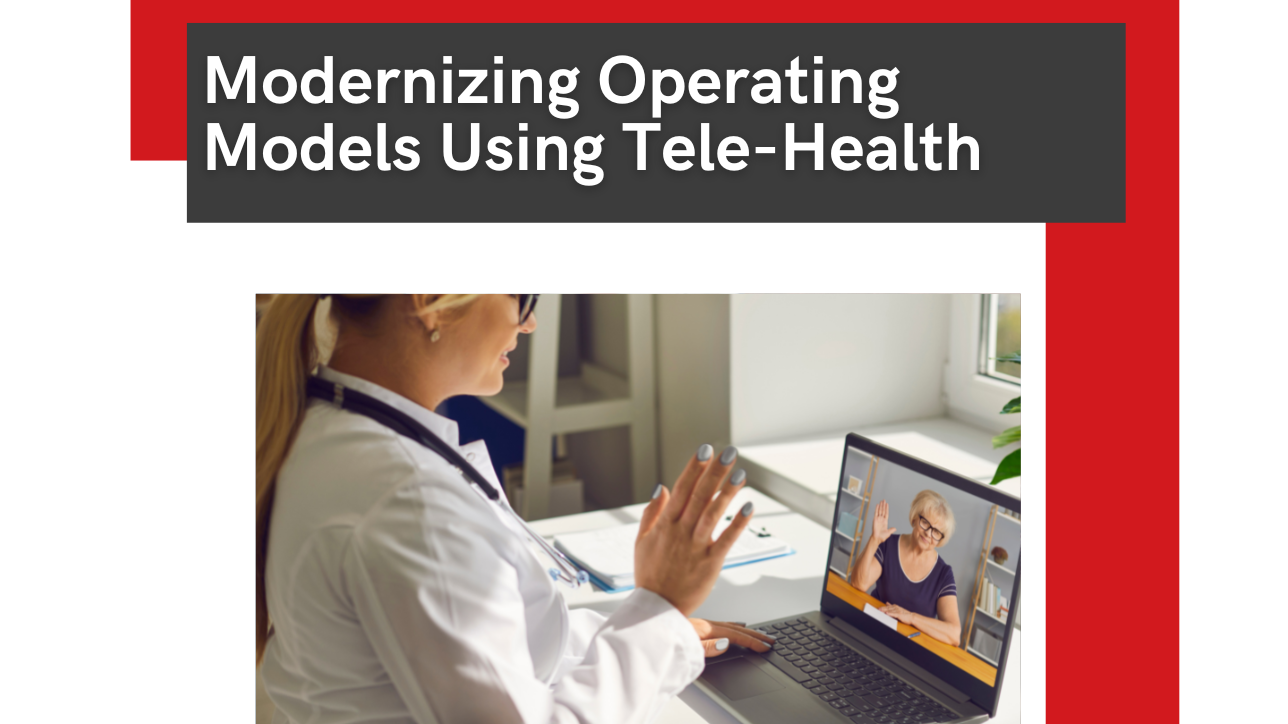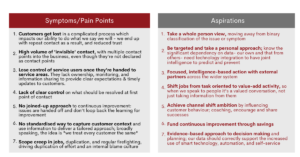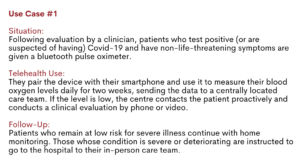5 minute read
Takeaway: All digital change – whether telehealth or digital initiatives in other contexts – must be intentionally designed and integrated into the overall operating model to deliver successful implementation and optimization of the technology.
The Digital Takeover is in Full Swing.
As consumers and service users, digital touch points in any service are now a basic expectation.
By now, many of us have consumed ‘digital transformation’ media through various formats that includes an inspiring story of an intelligent refrigerator. “The refrigerator of the future will order its own milk,” so, the story goes, “…and it is just around the corner”.
The global Covid-19 pandemic put the spotlight on accessing products and services that involve no physical touch points. But why hasn’t it stuck? After two years of consumers using these options, what does it take to normalize that behavior and assumed benefits?
In this article we use insight and practical learning from recent private and public sector projects to illustrate the apparent acceleration of digital solutions alongside the challenges in successful adoption. This includes the use of tele-health in recent healthcare operating model redesigns.
Beyond the hype of the digital takeover is a huge amount of effort in businesses to figure out what this all means. And even more effort is invested into working out why ‘digital transformation’ initiatives have not gone to plan.
In the case of public service providers, many are deeply burrowed into their own specialisms and struggle to come up for air to realize their challenges and opportunities are remarkably similar across the system. Take this simple list of symptoms and aspirations taken from a cross-section of our recent work with public service providers:
This illustration does not advocate for the imitation of solutions. However, such aspirations are the source of many sought after digital solutions such as remote video contact solutions (tele-health, etc.), robotic process automation (RPA), contact centre as a service (CCaaS), use of AI and machine learning, amongst others.
Look Out For The Digital Trap.
The common trap business leaders fall into is retrofitting and in some cases, force-fitting a technology project into an existing operating model based on functional, programmatic thinking and doing. This is a recipe for disaster.
Technology and data solutions far too often become the goal which quickly becomes a program, then assigned to an IT Function or an IT vendor partner. Whilst technology and data are a method to deliver the overall outcome, technology will not transform the operating model and ways of working. For example, adopting tele-health in healthcare helps to deliver a goal of a seamless patient experience which improves health care quality and timeliness, increases access, and lowers costs in the process.
Here is an extract taken from a recent UK Government report on the challenges of digital change:
The report puts a critical spotlight on digital change initiatives across UK Public Services. At the same time, it makes simplistic recommendations to solve the wide-spread issue, including training senior leadership in digital skills, and putting stronger program oversight and governance in place.
There are several gaps in the report, which will be illustrated later. It is worth highlighting that the UK Government report is not an isolated example. The OTM team identifies many of the issues in private and public organizations across the globe, most of which are chasing a digital agenda.
The big “so what”: Digital change is made more challenging when the digital solution becomes the panacea of the solution consuming all the time, focus, effort, and money.
There is No Such Thing as Digital Transformation.
Concisely: digital initiatives, such as tele-health, should not be seen as an isolated add-on or a discreet and unique program, but treated as an intentional driver behind operating model transformation. Anything less will be ineffective.
In a healthcare context, the biggest difference in preventing serious health decline is the frequency of measurement and timeliness of treatment. These are factors that tele-health can facilitate. But they require a change to the operating model. This challenges the traditional healthcare operating model, which is based on intermittent, episodic care; with follow-up visits of weeks at a time or repeat referrals. This “one size fits all” care model delivers poor patient experience: inconvenient, time consuming, expensive, and symptom focused.
Consider the impact to service users, in healthcare and beyond, when you apply a systematic, holistic, and integrated change to the operating model:
Integrating telehealth and other modern technologies to the core operating model can deliver greater prediction, prevention, and proactive health management. There are many examples from progressive healthcare providers in the US and Europe which demonstrate that integration can significantly improve access to the right care, at the right time, in the right way, with the right resources to match. One provider on their own cannot make it a success, it requires collaboration and effort across the system.
It also requires acceptance that digital on its own is no silver bullet. There is no such thing as digital transformation – only operating model transformation. All digital change – whether tele-health or digital initiatives in other contexts – must be intentionally designed and integrated into the overall operating model to deliver successful implementation and optimization of the technology.
References:
1 Challenges in Implementing Digital Change, House of Commons Committee of Public Accounts, Thirtieth Report of Session 2021-22, 6 December 2021
2 The Telehealth Era Is Just Beginning, Robert Pearl and Brian Wayling, Harvard Business Review May 2022
Let’s Talk!
Chris Furnell is a Senior Consultant at ON THE MARK. OTM is a global leader in collaborative operating model modernization that creates real change, fast. OTM’s passion for collaborative business transformation is supported by pragmatism, systems thinking, and a belief in people that is unparalleled for 33 years.






